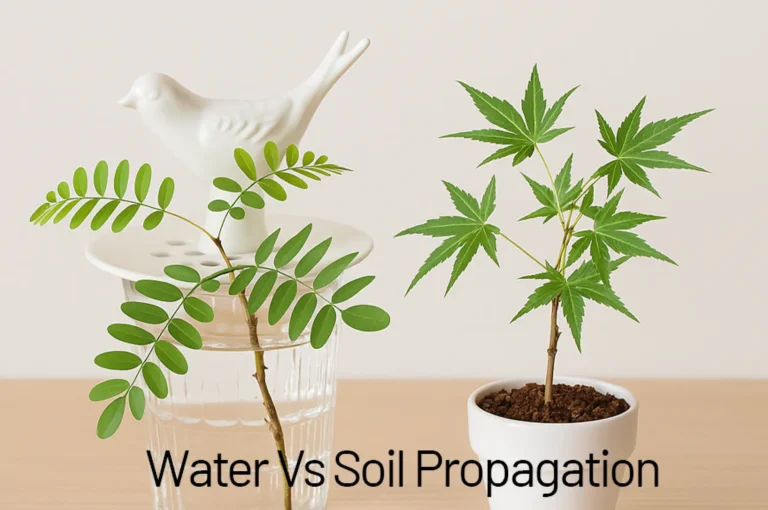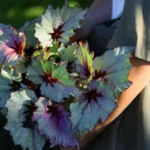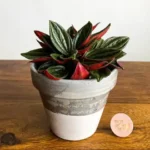water vs soil propagation methods for houseplants
Propagation—the technique of multiplying your plants—is not only a rewarding hobby but also an efficient way to expand your collection without the additional costs of purchasing new plants. For beginners, two especially popular propagation methods are water propagation and soil propagation. Both have their merits and limitations, and knowing when and how to use each method can significantly influence your propagation success rates.
This article will break down the differences clearly, provide step-by-step guidance, illustrate each method’s pros and cons, and indicate which plants respond best to water propagation versus soil propagation. Whether you’re a beginner gardener or simply curious, you’ll gain valuable insights to help you propagate confidently and manageably.
Propagation in Water: Understanding the Basics

How does Water Propagation Work?
Water propagation is a straightforward process. Cuttings are placed into clear containers filled with water, allowing you to directly observe root growth. Roots typically begin to appear within 1–3 weeks depending on the plant species (Martin, 2020).
Step-by-Step Guide to Water Propagation
Follow these simple steps to propagate plants successfully in water:
- Select Healthy Cuttings: Choose a healthy stem cutting from the parent plant, ideally 4–6 inches (10–15 cm) long, including several leaf nodes. Nodes are areas where leaves or buds are attached, essential for root development.
- Remove Lower Leaves: Strip away lower leaves near the cutting’s base, leaving a clean stem submerged in water. Removing leaves prevents them from rotting underwater.
- Place in Water: Fill a transparent container with filtered or distilled water, ensuring at least one node sits below the surface. Ensure no foliage touches or submerges below the water level to avoid rotting.
- Provide Optimal Conditions: The ideal ambient temperature for most houseplants is approximately 18°C–24°C (65°F–75°F), with bright, indirect sunlight corresponding to about 10,000–15,000 lux (Smith & Henry, 2021). Avoid direct sunlight as it may encourage algae growth and extreme temperatures.
- Weekly Maintenance: Change the water once a week, gently rinsing roots if any algae build-up occurs. Regular water changes prevent stagnation, oxygenate the roots, and enhance propagation success.
- Observe Root Growth: Roots generally appear within 2–4 weeks. Once roots are approximately 2–4 inches (5–10 cm) long and robust, transplant into soil for continued growth.
Best Plants for Water Propagation
Certain plant varieties are especially successful in water propagation, such as:
- Pothos (Epipremnum aureum)
- Heartleaf Philodendron (Philodendron hederaceum)
- Spider Plant (Chlorophytum comosum)
- Chinese Money Plant (Pilea peperomioides)
- Wandering Jew (Tradescantia zebrina)
Pros and Cons of Water Propagation
- Pros:
- Easy monitoring of root growth.
- Low startup costs and simple process.
- Rooting hormone usually unnecessary.
- Visually rewarding process.
- Cons:
- Increased risk of root rot if water isn’t refreshed regularly.
- Roots grown in water are delicate and can experience transplant shock when moved into soil.
- Limited nutrients in water can lead to weaker initial root systems.
Propagation in Soil: Understanding the Essentials
How does Soil Propagation Work?
Soil propagation involves placing plant cuttings directly into nutrient-rich potting mix where roots grow gradually, usually within 2–5 weeks, depending on plant species (Watson & Nash, 2018). Roots cultivated in soil often become stronger and more robust, adjusting quicker to permanent conditions.
Step-by-Step Guide to Soil Propagation
Successful soil propagation includes these key steps:
- Prepare the Soil Mix: Opt for a lightweight, aerated soil mix combining peat moss, perlite, and vermiculite (equal parts). This allows good drainage, aeration, and balanced moisture control.
- Cut and Prepare the Stem Cutting: Choose similarly a healthy cutting, remove lower leaves, and optionally dip the cuttings’ bottom end approximately ½ inch (1 cm) into powdered rooting hormone to speed up rooting.
- Plant the Cutting: Insert the cutting 1–2 inches (3–5 cm) into the soil mix, ensuring that at least one node is under the soil surface.
- Create an Ideal Environment: Keep humidity levels around 60%–80% using humidity domes or clear plastic covers for the first week or two. Maintain steady ambient temperatures between 20°C–24°C (68°F–75°F), with indirect light about 10,000–15,000 lux.
- Watering & Maintenance: Water lightly to maintain moisture but not sogginess, typically misting soil surface regularly or watering carefully at intervals of 5–7 days.
- Gradually Acclimate: After 2–4 weeks, carefully test root establishment by gently pulling the stem to feel gentle resistance. Slowly decrease humidity cover usage to acclimate the plant.
Best Plants for Soil Propagation
- Succulents & Cacti (Sedum, Crassula, Echeveria)
- Snake Plants (Sansevieria spp.)
- Rubber Plants (Ficus elastica)
- Fiddle Leaf Fig (Ficus lyrata)
- Rio Dipladenia (Mandevilla sanderi)
Pros and Cons of Soil Propagation
- Pros:
- Stronger initial root systems.
- Easier long-term transplant transition.
- Nutrient-rich medium promoting faster growth post-rooting.
- Lower risk of transplant shock.
- Cons:
- Cannot directly monitor roots visually.
- Initially higher risk of fungal growth due to moisture.
- More careful balance of watering needed.
Comparison Table: Water vs. Soil Propagation
| Factor | Water Propagation | Soil Propagation |
|---|---|---|
| Root Strength | Weaker initially | Stronger and robust |
| Ease of Monitoring | High | Low |
| Transplant Success | Lower (moderate risk of shock) | Higher (minimal shock) |
| Time to Root (typical) | 1–4 weeks | 2–5 weeks |
| Maintenance Level | Low (water changes) | Moderate (watering attention) |
Conclusion
Both water and soil propagation are valuable methods. For beginners looking for visual progress and rapid, straightforward rooting, water propagation can be highly rewarding. Gardeners who want robust, resilient young plants and a smooth transition may find soil propagation preferable. Understanding plant-specific preferences greatly improves propagation outcomes, and a mix of both methods often suits a diverse home plant collection best.
References
- Martin, E. (2020). Propagation Techniques for Houseplants. Timber Press.
- Watson, A., & Nash, J. (2018). An Introduction to Plant Propagation: Step-by-step Tips and Techniques for Beginners. Crowood Press.
- Smith, B., & Henry, L. (2021). Guide to Indoor Gardening: Light, Humidity, and Temperature Requirements. Gardening Press.








